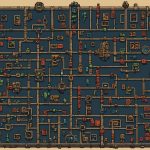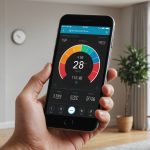Understanding Zone Heating
Zone heating represents a significant advancement in home comfort and heating efficiency. By dividing a home into different zones, each with its heating controls, zone heating allows for precise temperature management. Unlike traditional methods that heat the whole house uniformly, zoned systems enhance efficiency by only heating specific areas as needed.
How Zoned Systems Improve Efficiency
Zoned systems operate using a series of thermostats and dampers within the ductwork, regulating airflow to designated areas. This heating efficiency is achieved by focusing energy on parts of the home that are occupied, reducing waste in unoccupied spaces. The system’s responsiveness to real-time needs ensures optimal energy use and consistent comfort.
In the same genre : Maximize your profit: smart tips to sell your iphone 15
Zoned Heating vs. Traditional Methods
Traditional heating typically involves a single thermostat controlling the entire house, which can lead to energy inefficiency and uneven temperature distribution. In contrast, zone heating systems provide tailored temperature settings for individual areas, often resulting in noticeable energy savings. Additionally, home comfort is enhanced as residents can adjust settings to their preferences in different zones, eliminating common complaints about hot or cold spots. Overall, zone heating represents a more strategic and sustainable approach, offering both comfort and economic advantages.
Benefits of Smartphone Control
In today’s era of smart home technology, smartphone control of heating systems is a transformative feature that offers significant advantages. By utilising a dedicated mobile app control, users can immediately experience enhanced energy management. This functionality allows homeowners to monitor and adjust their heating systems remotely, effectively contributing to substantial energy savings. With the ability to tailor the heating schedule to the household’s needs via their smartphone, users can ensure that the heating operates only when necessary, thereby reducing unnecessary energy consumption.
Have you seen this : The Ultimate Guide: Transform Your Smartphone into a Smart Baby Monitor System
Furthermore, the convenience brought about by mobile app control significantly improves user comfort. The app provides an interface where users can effortlessly evaluate and alter their heating settings, adapting to changes in their daily routine or sudden weather fluctuations. This adaptability ensures a personalised comfort level that traditional heating methods lack.
The potential for energy savings through mobile phone management cannot be overstated. Smart home technology’s integration enables users to exploit scenarios like turning down the heating while away from home. The impact is often reflected in reduced energy bills and a decreased carbon footprint. Ultimately, the convenience and control offered by smartphone compatibility make managing home heating far more intuitive and effective.
Recommended Smart Heating Products
In the dynamic world of smart home technology, selecting the right smart heating products can significantly influence both energy efficiency and home comfort. Smart thermostats offer customisable control over heating schedules, resulting in tangible energy savings. By evaluating heating systems reviews, buyers can make informed decisions.
Top Smart Thermostats on the Market
Today’s market boasts an array of top-performing smart thermostats that cater to diverse needs. Look for devices that seamlessly integrate with existing heating systems, offering user-friendly interfaces and robust apps for maximum convenience. A well-regarded model might feature:
- Smart home compatibility
- Energy usage tracking
- Adaptive learning capabilities for better efficiency
Best Zoned Heating Systems
Selecting the right zoned heating solutions requires attention to their capacity to enhance heating efficiency through precise temperature controls. Popular options often highlight intelligent features, such as automatic adjustments based on room occupancy or weather patterns, ensuring prioritised comfort in every zone.
Features to Look for in Smart Heating Devices
When choosing, focus on features that provide control flexibility and enhance user experience. Key aspects include programmable schedules, real-time monitoring, and easy-to-navigate mobile app interfaces. These attributes ensure that your home remains comfortable with minimal energy waste, supporting an efficient and sustainable lifestyle.
Setup and Installation Guide
Setting up a zoned heating system may seem challenging, but with the right approach and a few setup tips, it can be a manageable DIY project. Begin by understanding the HVAC system’s current configuration, as not all homes are zoned-ready from the start. You’ll require essential tools like a drill, screwdriver, and appropriate ductwork dampers designed for zoning.
For successful heating system installation, first, identify and divide the living spaces into zones. Each zone should be equipped with its thermostat—this ensures efficient energy distribution tailored to specific needs. Make sure the wiring for each thermostat is correctly connected to the HVAC system. Missteps here may lead to heating efficiency issues.
DIY enthusiasts should carefully follow a step-by-step guide, ensuring that each component is securely fitted without interference from existing systems. Additionally, setting up smart thermostats involves downloading the relevant mobile app for home comfort customization. Avoid common pitfalls, such as neglecting a comprehensive system check post-installation, to ensure everything functions smoothly. Proper calibration guarantees optimal performance and extends the life of the system. Remember, thorough preparation and patience are key to a hassle-free installation process.
Comparison of Smart Heating Systems
Exploring smart heating systems involves evaluating their features against personal needs through system comparison. Understanding these distinctions helps in selecting the best fit for your home’s requirements.
Overview of Leading Brands
In the growing market of smart heaters, leading brands like Nest, Ecobee, and Honeywell offer varied options catering to different preferences. Each brand combines innovation with smart heating features, delivering enhanced control.
Pricing and Performance Comparison
While conducting a system comparison, consider both initial costs and potential long-term savings. Typically, Ecobee and Nest are pricier but provide advanced adaptive learning capabilities and seamless integration with smart home technology. Honeywell often offers a cost-effective alternative without sacrificing essential functions, presenting a balanced choice for budget-conscious users.
User Experiences and Feedback
Real-world experiences play a crucial role in decision-making. Look at user feedback for insights on diverse smart heating systems. Customers highlight the ease of mobile app control and increased energy savings, with numerous testimonials praising improved home comfort through effective zoning. It is essential to weigh pros and cons, considering aspects like user interface and customer support reliability. This comprehensive approach ensures a well-informed decision aligning with your personal needs for both functionality and budget.
Tips for Maximizing Energy Savings and Comfort
Maximizing energy efficiency and improving comfort optimization in your home require strategic approaches that align with the capabilities of your heating system. By effectively managing your heating zones, you can achieve significant energy savings. Here, we provide practical heating tips that can help optimize your system’s performance.
Regular system maintenance is paramount. Regularly inspect and clean components like filters and vents to ensure your system operates at its peak. This simple routine can prevent unexpected breakdowns and maintain consistent energy efficiency.
Adjusting settings to accommodate seasonal changes is crucial for optimal comfort. In colder months, slightly lower your thermostat settings when you’re away or asleep. Conversely, increase them during warmer months to conserve energy while maintaining a pleasant indoor climate.
During colder seasons, ensure your windows and doors are sealed to prevent heat escape, boosting your heating system’s effectiveness. Weather strips and insulation can be small investments with significant returns in comfort levels and energy savings.
In addition, leveraging smart thermostats with programmable settings can further customize the heating based on daily and seasonal schedules. These adjustments not only foster a comfortable living environment but also optimize the system’s lifespan. Implementing these measures will ensure your home remains efficient and comfortably warm throughout the year.











